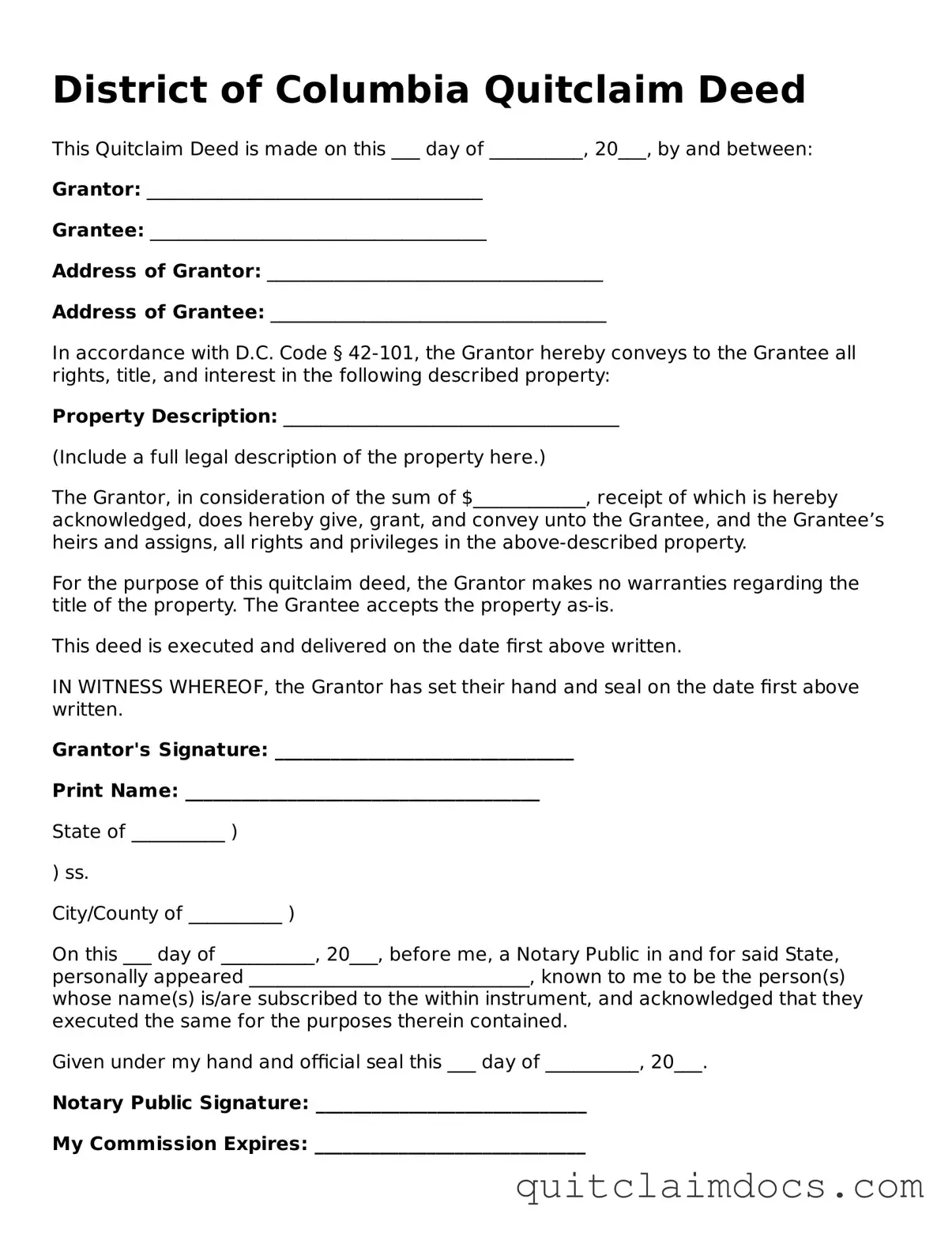District of Columbia Quitclaim Deed
This Quitclaim Deed is made on this ___ day of __________, 20___, by and between:
Grantor: ____________________________________
Grantee: ____________________________________
Address of Grantor: ____________________________________
Address of Grantee: ____________________________________
In accordance with D.C. Code § 42-101, the Grantor hereby conveys to the Grantee all rights, title, and interest in the following described property:
Property Description: ____________________________________
(Include a full legal description of the property here.)
The Grantor, in consideration of the sum of $____________, receipt of which is hereby acknowledged, does hereby give, grant, and convey unto the Grantee, and the Grantee’s heirs and assigns, all rights and privileges in the above-described property.
For the purpose of this quitclaim deed, the Grantor makes no warranties regarding the title of the property. The Grantee accepts the property as-is.
This deed is executed and delivered on the date first above written.
IN WITNESS WHEREOF, the Grantor has set their hand and seal on the date first above written.
Grantor's Signature: ________________________________
Print Name: ______________________________________
State of __________ )
) ss.
City/County of __________ )
On this ___ day of __________, 20___, before me, a Notary Public in and for said State, personally appeared ______________________________, known to me to be the person(s) whose name(s) is/are subscribed to the within instrument, and acknowledged that they executed the same for the purposes therein contained.
Given under my hand and official seal this ___ day of __________, 20___.
Notary Public Signature: _____________________________
My Commission Expires: _____________________________
